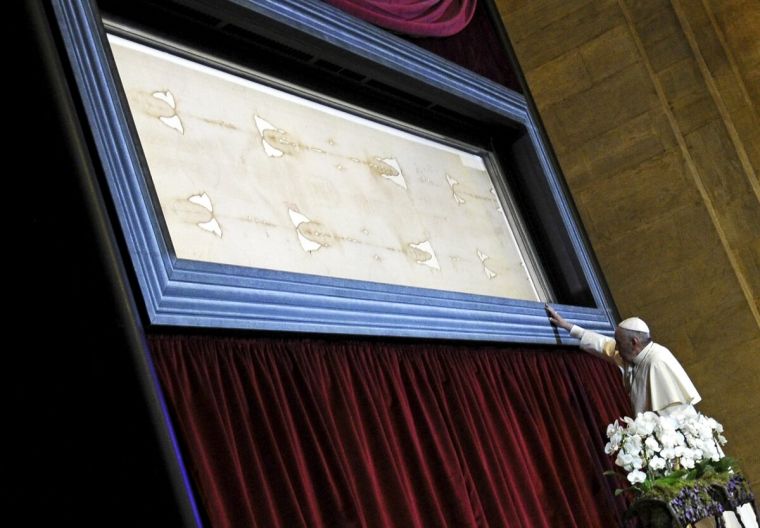Pope Francis visits the Turin Shroud

The Pope has this morning viewed the Turin Shroud, believed by many to be the burial cloth in which Jesus waswrapped and which is said to bear his image.
Pope Francis venerated the Shroud at the city's cathedral at the start of a two-day visit to Turin where he will meet young people, workers, juvenile detainees, immigrants and the sick. He will also take the opportunity to visit his own Italian relatives.
Many scholars believe the Shroud to be a medieval forgery. However, John Iannone, a world expert on the Shroud and author of two books on it, told Vatican Radio that the latest tests on the linen give credence to its authenticity.
He said his own interest began 37 years ago but he did not view the Shroud until 1998 when he was "mesmerised" by the image of the face on the cloth.
He argued that the results of the latest tests on the pollen on the cloth and on the blood stain offer compelling proof for its authenticity.
Iannone said the Pope's visit was "wonderful" and will "raise public awareness" concerning this "very powerful icon."
The Archbishop of Turin Cesare Nosiglia said the Pope's visit "confirms the devotion to the Shroud that millions of pilgrims recognise as a sign of the mystery of the passion and death of the Lord."
In 2013, when the Shroud was shown on television for the first time in 40 years, Pope Francis said: "the Man of the Shroud invites us to contemplate Jesus of Nazareth. This image, impressed upon the cloth, speaks to our heart and moves us to climb the hill of Calvary, to look upon the wood of the Cross, and to immerse ourselves in the eloquent silence of love...
"This disfigured face resembles all those faces of men and women marred by a life which does not respect their dignity, by war and violence which afflict the weakest... And yet, at the same time, the face in the Shroud conveys a great peace; this tortured body expresses a sovereign majesty."
The Catholic Church takes no official position on the Shroud's age but says it is a matter for scientific investigation. Carbon tests in 1989 dated it at about 700 years old.











